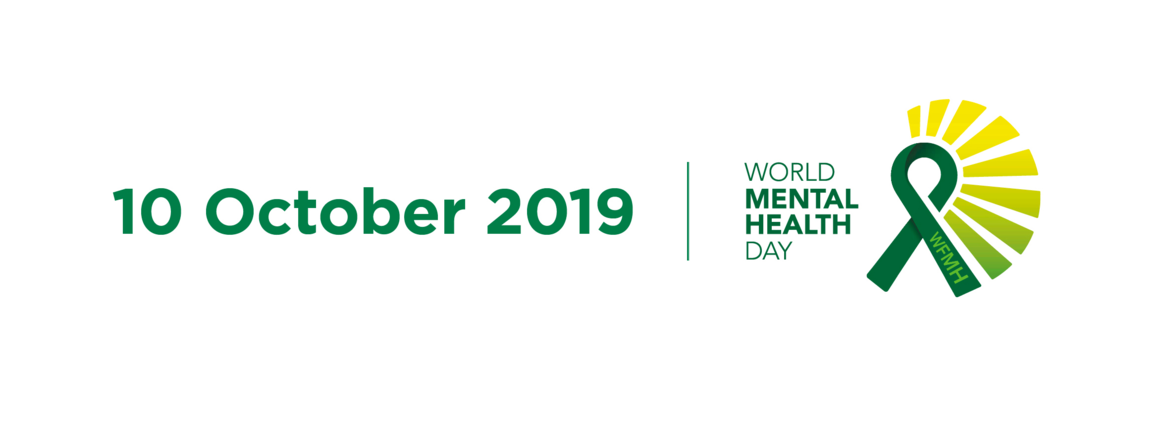#40seconds: why – and how – we need to talk about suicide in our workplaces

7 – 11th Oct marks World Mental Health Awareness Week and this year, the WHO has focused the theme on suicide prevention. Here’s how we can support colleagues and employees, raise awareness, and fight stigma around the topic.
This World Mental Health Day, individuals and companies around the globe are coming forward to raise awareness and address the stigma surrounding mental health.
While we’re starting to see more people willing to have the conversation, mental health can still be a difficult topic to talk about. When it comes to suicide, it can be harder still.
However, a conversation can change or even save a life.
Every 40 seconds, someone loses their life to suicide. That’s close to 800,000 people a year globally, with many more attempting suicide. It’s a tragedy that has a long-lasting impact on the people left behind and is now the leading cause of death among young people aged 20-34 in the UK.
With the average adult spending just over 1800 hours or a third of their waking hours a year in work, we each have a responsibility – as employers and as colleagues – to play our part in addressing this global health crisis.
By creating a work environment in which staff can talk, seek help, and get support without the fear of stigma or discrimination, we may be able to help those who are afraid of seeking help, in crisis, or who have been bereaved by suicide.
The reality around suicide

One in five adults will experience suicidal feelings at some point in their lives. Time to Change puts this into the context of the workplace:
In a company of 1000 workers, one worker will die by suicide every ten years. For every worker that takes their life, another 10 – 20 will make a suicide attempt.
Suicidal thoughts may affect anyone regardless of their age, gender, where they live, or what is happening in their life.
However, the rate of suicide is considerably higher in men: around three times as many men die as a result of suicide, compared to women.
There are some other recognized high-risk factors; for example, those who have been recently bereaved, and those with an underlying mental illness such as bipolar disorder and schizophrenia, and the risk is significantly higher among the lesbian, gay, bisexual, and transgender community.
Why we need to bring mental health conversations into the workplace

If these figures tell us anything, it’s that suicide is a global mental health issue that doesn’t discriminate. More importantly, it’s made worse by the fact that people are afraid to speak out or seek help or even face discrimination when they do.
Surveys into the issue highlight some worrying insights:
- 9 out of 10 people who experience mental health problems say they face stigma and discrimination as a result
- 56% of adults surveyed said they would not hire someone with depression even if they were the best candidate for the job
- 60% of people say the stigma and discrimination are as damaging or more damaging than the symptoms of their mental health problem
- Less than half of employees say they would feel able to talk openly with their line manager if they were suffering from stress
- Only 11% of employees have discussed a recent mental health problem with their line manager
Fear of discrimination may include feeling they may not be trusted with work after disclosing a mental health issue or being passed over for opportunities or promotion. Others may fear they won’t be believed or understood, or that peers or managers may see it as an excuse or laziness.
Every one of these fears may hold people back from getting the help they need. By having a conversation and talking about suicidal thoughts and feelings in the workplace, we may be able to reduce the chance of someone taking their own life.
How can we address stigma about mental health and suicide in the workplace?
There is no silver bullet or single solution that will change our organizational culture overnight.
However, many small things accumulatively can help change perceptions, challenge myths or discrimination, and provide critical support for those who need it most. A holistic approach is most effective.
- Put mental health on the management agenda.

We have a duty of care to our employees. To ensure we meet that obligation, we put in place policies and guidance around health and safety, deliver awareness training, and put safety notices up where needed. However, duty of care should also cover mental well-being.
Change can’t take place unless it is driven from the top down; ensuring mental health is on the radar of those at the top is a crucial first step.
- Make a commitment
Ensure you’re not all talk, no action.
Make a clear commitment to improving mental wellbeing and addressing stigma or discrimination in your workplace but appointing champions who can help bring about positive change, signing the Time to Change employer’s pledge, and running events, training or awareness workshops internally for both staff and management.
- Make mental wellbeing official
Create guidance and information around time off for mental health reasons or work-related stress. Ensure mental illness is one of the criteria addressed in your equality, diversity, and inclusion policy and that there are protocols in place when an employee discloses a mental health problem.
Create guidance and training support materials for middle managers, who are likely to be the first port of call in the event of a member of staff struggling.
- #AskTwice
Time to Change has a great campaign around the concept of asking people twice if they’re OK which can be a great practice to bring into the workplace.
The idea behind this is that sometimes, we’ll say we’re fine when we’re not. To find out, we need to ask twice.
The campaign comes with helpful posters, email banners, screensavers, and social media images that can be repurposed in your workplace. It takes less than 40 seconds to ask someone twice if they’re OK, but it could prove invaluable to someone who needs to talk but is struggling. Promoting the initiative can encourage staff to check in with their colleagues.
- Know the warning signs
They don’t necessarily mean that an individual is thinking about suicide but can indicate that they’re struggling, and a conversation may help. Signs can include:
- Changes in productivity such as a deterioration in performance, lethargy, inability to concentrate or complete tasks
- Unexplained lateness or absences
- Withdrawal from colleagues or isolation
- Changes in personality or behavior, such as mood swings, agitation, anxiety, rage, anger or reckless behavior
- Increased drug or alcohol use
- Changes in eating and sleeping patterns
- Signs of self-inflicted physical harm
If we know what to look for, we’re more likely to step up and take those #40seconds to ask someone if everything is OK.
- Address myths, stigma, and prejudice
Much of the stigma around mental ill-health or suicide comes from a lack of understanding. This is made worse by the difficulties faced in talking about these topics. Expanding basic awareness requires us to speak out.

Consider publicizing common myths or preconceptions on your company intranet or through an internal communications campaign. Print off myth buster flashcards and run a team exercise to guess and discuss the myths and facts.
Even posters up in the staff break room are a small, subtle way to increase awareness and understanding, which can break down stigma and fear around reaching out for help.
- Talk about the language around suicide
The words we use can be a subtle yet powerful way to break down stigma – or, unfortunately, make it worse.
The word ‘commit’ about suicide comes from a period when suicide was treated as a crime. Even though the Suicide Act of 1961 decriminalized suicide in the UK, it is still a term that remains widely used. Educating staff on how to talk about suicide is a small yet significant way to change the conversation:
Stigmatizing terminology to avoid:
- Committed suicide
- Successful suicide
- Completed suicide
- Failed attempt at suicide
- Unsuccessful suicide
Terminology that is sensitive to the persons involved:
- Died by suicide
- Ended his/her life
- Took his/her life
- Attempt to end his/her life
Although seemingly small, using the right words can make a big difference.
- Know where to signpost

Internal communications has a crucial role to play in making staff aware of the resources, campaigns and materials available to help
Create signposting options for staff to your EAP or third-party organizations that can provide support where needed, and consider placing them somewhere highly visible, such as the staff breakroom, rather than in the back of a policy handbook. Options can include:
If you have an Employee Assistance Program (EAP), it may be beneficial to have a champion or senior manager share firsthand experience of using it or the benefits, to break down the barrier or fear of calling.
- Run a wellness campaign
Death by suicide is often the result of an accumulating, complex set of circumstances or experiences, rather than a single event. This ‘drip drip’ effect of ongoing stressors can cause a gradual breakdown in mental health and wellbeing that increases the risk of suicidal thoughts or mental illness.
Identifying and managing these ‘drips’ can be a powerful prevention tool, as can helping people to develop healthy intrapersonal skills and a positive inner voice. A wellness campaign encourages staff to think about what keeps them well, what causes them to feel stressed or unwell, and how they might manage these.
It can cover everything from diet and the benefits of exercise to asking for help or talking to someone when they feel overwhelmed, or even exploring options such as mindfulness and meditation.
- Any place is the right place to talk about mental health
Another campaign by Time to Change, this one focuses on how to approach conversations that make us feel uncomfortable. Comprising of videos and an information booklet, it offers practical advice and tips on how to confront our fears and initiate a conversation with colleagues, family, or friends – at any time.
Often, it’s these off-the-cuff and casual interactions that foster the right space for people to talk.
Hosting a ‘Tea and Talk’ event, for example, probably won’t see anyone come along and begin openly discussing their mental health – it is important to raise awareness, but it’s a daunting prospect for someone who is struggling. It’s the one-to-one chats that matter. Giving staff the tools, information, and confidence they need to make that happen is hugely important.
Taking just 40 seconds can save a life.
Every life lost to suicide is a tragedy. As employees or managers, we may not be mental health professionals, and we probably don’t have the answers when someone is struggling.
However, we don’t have to be experts to play our part and help prevent death by suicide. Even the smallest of steps can contribute to a much-needed cultural shift that will overcome the stigma surrounding suicide. And the most simple act of all – taking just a few seconds to check in with our colleagues – can make a big difference.
This World Mental Health Day, let’s all commit to asking twice – “Are you ok?”.
